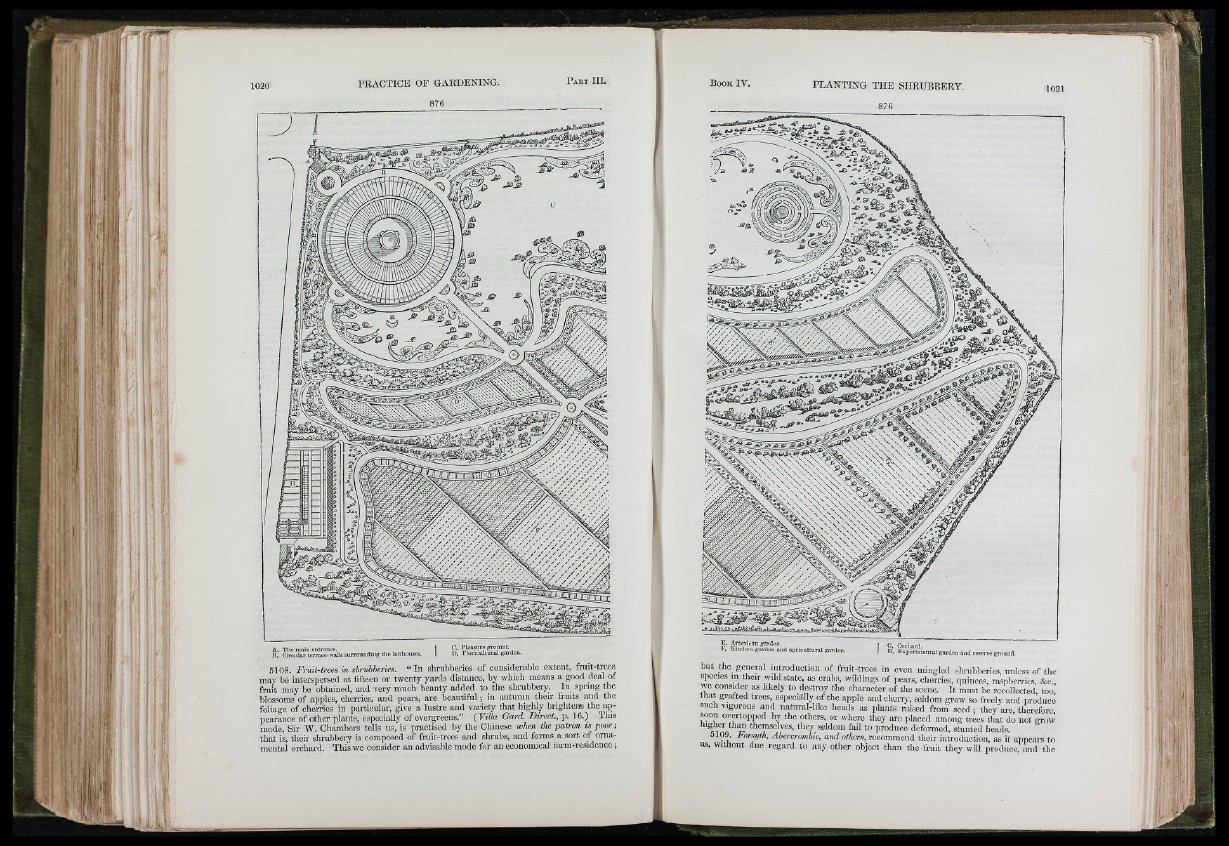
íí S I
' l
5108. F ru it-tre e s in shrubberies. “ In shrubberies of considerable extent, fruit-trees
may be intersperaed at fifteen or twenty yai-ds distance, by which means a good deal of
fruit may be obtained, and very much beauty added to the shrubbery. In spring the
blossoms of apples, cherries, and pears, are beautiful; in autunin their fruits and tho
foliage of cherries in particular, give a lustre and variety that highly brightens the appearance
of other plants, especially of evergreens.” ( V illa G ard . D ire c t, p. 16.) This
mode. Sir W. Chambers teUs us, is practised by tbe Chinese when the p a tro n zs p o o r;
that is, their shrubbeiy is composed of fmit-trees and shnibs, and forms a sort of ornamental
orchard. This we consider an advisable mode for an economical farm-rcsidcnco;
PLANTING TIIE SHRUBBERY.
876
E, American ganlon.
F, Kitcheii-earden an d agricu ltu ral garden. J , Orchard.
H, Experimental garden and reserve ground.
but the_ general introduction of fruit-trees in even mingled shmbbcries, unless of tlie
^eci^ in their wild state, as crabs, wOdings of pears, cherries, quinces, raspberrie.s, &c.,
we consider as likely to d^troy the character of the scene. It must be recollected, too,
that grafted trees, especially of the apple and cheny, seldom grow so freely and produce
such vigorous and natural-like heads as plants raised from seed: they are, therefore,
among trees that do not grow
higher th^ themselves, they seldom fail to produce deformed, stunted heads.
5109. lo r-s y ik , Abercrombie, an d others, recommend them introduction, as it appears to
us, without due regard to any other object than the fruit they will produce, and the
j '
■£|.
Y
l i"!
■